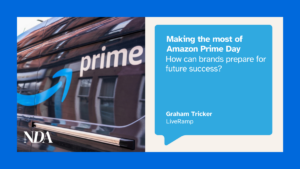By Louise Hutchins, The Loyalty People
A lot has changed since the retail sector’s last round of New Year meetings: those exciting get-togethers when strategy is finalised, seasonal campaigns are agreed and we’re off and running for another year. As someone who spent years in high street retail leading loyalty propositions, I know that the shape, scope and vibe of these planning sessions will be very different in 2021.
So much has changed, and there’s still so much change and disruption to come. For loyalty professionals, it would be easy to feel daunted. Customer loyalty in the way we used to understand it has been shattered by Covid, as people’s shopping choices become less fixed and more driven by convenience, location and online efficiency. This means the need to engage customers is ever greater – but so is the need for loyalty professionals to demonstrate the value of their programs, at a time when so much focus is on the day to day operational response to the pandemic.
So where does this leave loyalty in 2021?
Whether a business has an established and successful program, or is in the process of designing a new one, there could be a temptation to make a series of quick fix tactical changes. It’s true that retailers now need to be ever ready for change, and fast, responsive customer communications have a valuable role to play. However be wary of adjusting your approach to just one reactive, short term setting. Successful loyalty programs need long term vision and commitment, and a purpose that makes sense for the bigger, broader goals of the business. Their aim is to engage customers and keep them onside, for life if possible, however tough the short term trading conditions become. That’s why I’d urge businesses to retain these three core pillars at the heart of their loyalty strategy.
1. Create a loyalty program with clear benefits
Customers want to feel valued, and all loyalty programs will do that to a certain extent, building an important emotional connection between them and a brand. But the highest returns will come when customers see a simple, tangible benefit from being part of a loyalty program. This could be small seasonal discounts, free samples, cash back reward cards, birthday treats or special experiences for high spending customers. Whatever changes are happening in the world around them, shoppers will always like to save a bit of money, get a little freebie and to be rewarded and personally recognised for spending money with a brand. If they don’t see clear evidence of this happening, they’ll move on.
2. Keep it simple for maximum interaction
A system that is overly complex is doomed to failure. Neither your in-house team nor time-pressed shoppers will invest in a program that takes too long to navigate with multiple forms, processes and levels. If staff can’t explain the simple benefits to customers – 20% off, £10 back for every £100 spent – they’ll struggle to get sign up at point of sale or within online interactions. If customers don’t get it quickly, they’ll move on and quickly disengage from the program. In my experience, it’s better for a loyalty program to be known for one or two really great, memorable benefits than trying to be all things to all people, leaving shoppers confused as to what they’re actually getting out of it. And for your in-house team? Once set up, aim for a program that is as easy to run and resource light as possible at the back end, allowing for creativity and fresh ideas up front.
3. Be clear on business purpose
What do you want your loyalty program to do? Increase sales? Improve customer retention and stop churn? Encourage friend referrals to drive new customer acquisition? Be very clear at the outset as to the specific goals you are aiming for, the strategy you will use and the benefits success will bring the business. For most brands, there’s an understanding that loyal customers are more valuable, and money spent here will deliver with increased frequency of shop, spend and referral – over the more expensive approach of customer acquisition. For some there’s an interest in data capture to better understand and personalise the customer experience.
For others, it’s about rewarding new customers with a sign up discount, to encourage more people to trial the brand. Whatever the aim, make sure the goals are clear and measurable, with metrics in place to track engagement and find out what’s working and how it is impacting sales and wider business goals.









